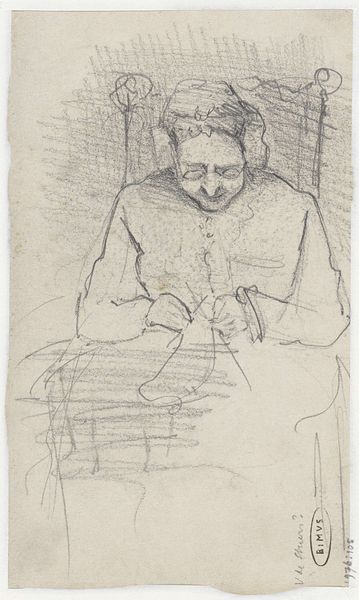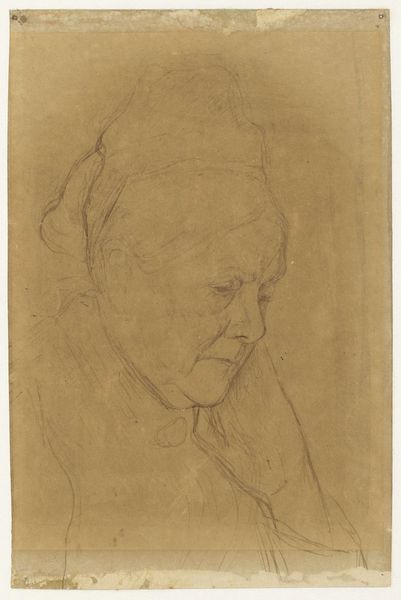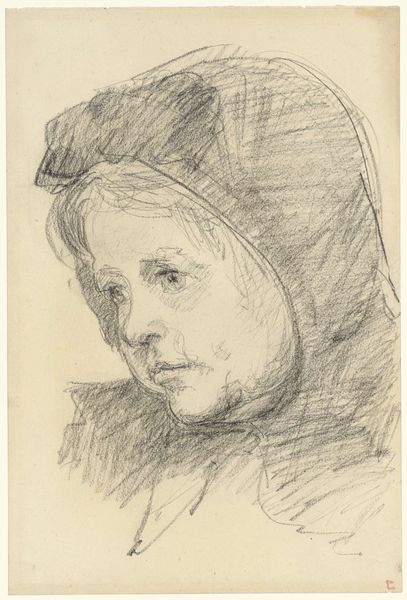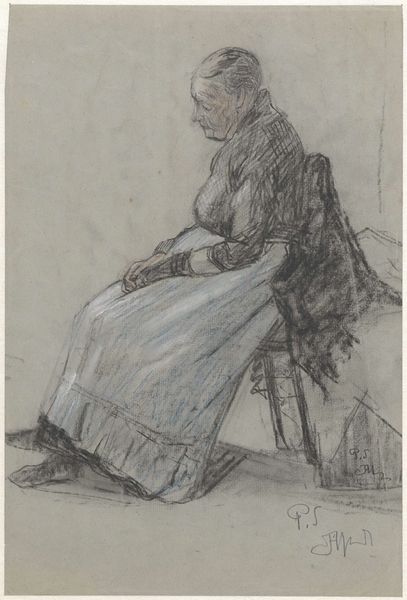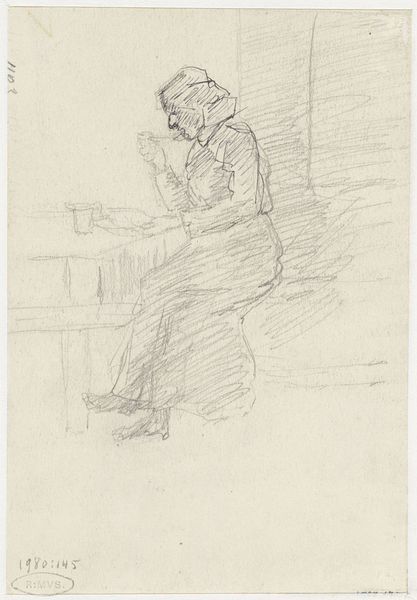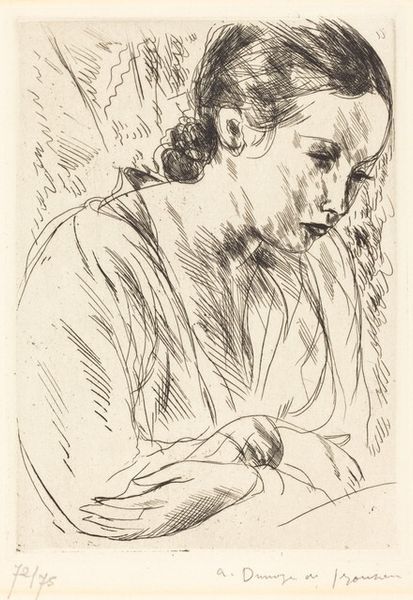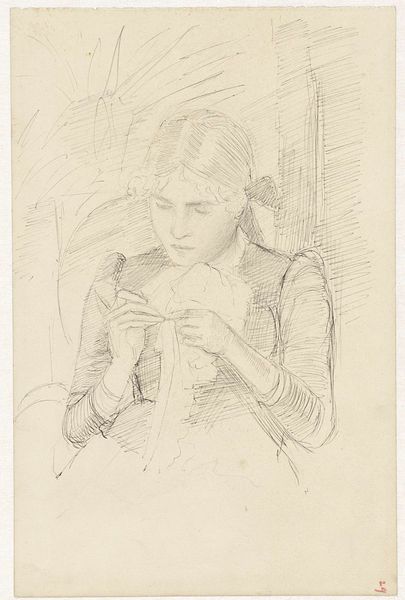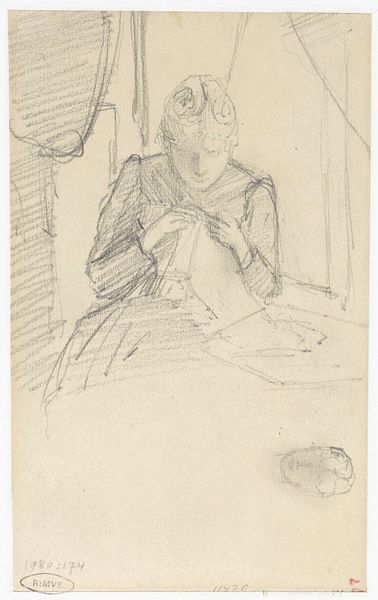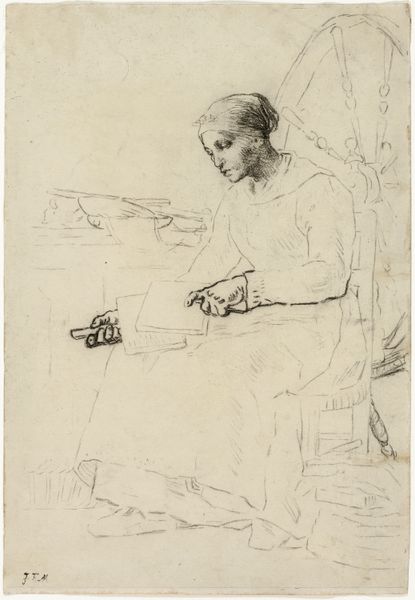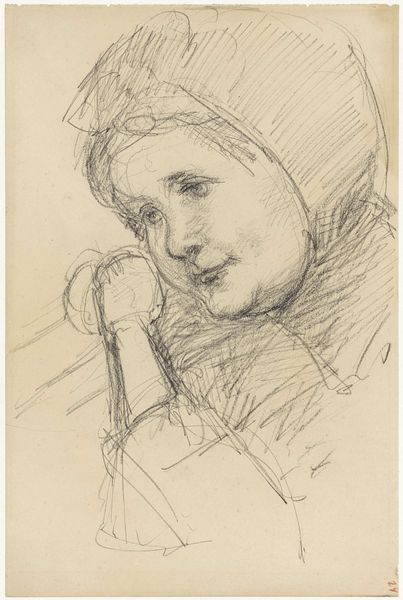
drawing, pencil
#
portrait
#
drawing
#
dutch-golden-age
#
pencil sketch
#
pencil
#
portrait drawing
#
realism
Dimensions: height 131 mm, width 208 mm
Copyright: Rijks Museum: Open Domain
Curator: Gazing at this work, I am struck by its raw intimacy. Jozef Israëls captured these glimpses, which are part of a larger compilation entitled "Handwerkende vrouw en schets van een boer bij een hek". What is your initial read on this sketch? Editor: Immediately, I am drawn to the palpable weight of labor conveyed through such delicate lines. Look at the downward gaze of the woman; there is something melancholy. It is as if the act of labor defines her existence in totality. Curator: Yes! I feel that too. Israëls, working sometime between 1834 and 1911, really focuses our attention on the humanity, portraying, perhaps, her silent fortitude, rendered only with pencil on paper. There's almost a devotional quality to her lowered head. Editor: I am thinking about this “devotional quality” in the context of labor. Often women's labor in that era, particularly domestic or agricultural work, was devalued or rendered invisible. In portraying the quiet intensity, isn’t he granting it a significance often denied? Curator: Absolutely. In many ways, I think the beauty resides in that stark, truthful simplicity. By choosing to sketch in pencil, Israëls eliminates any pretense, cutting straight to the emotional core of the scene. You can find this piece, by the way, on display at the Rijksmuseum. Editor: When considering the second sketch of the farmer leaning over the gate – also head bowed – a broader narrative about rural labor emerges. Both figures are linked, perhaps by their shared social class. The artist gives visual expression to social inequalities and historical injustices in a subtle way. Curator: Yes, it allows the drawing to expand and say something a bit louder! The way Israëls subtly connects the physical posture to express shared experience through these quick strokes, speaks volumes about the nature of their interconnectedness, really. Editor: It also seems important to highlight that depicting peasants engaged in daily work aligned Israëls to a larger art movement focused on Realism, even social critique, and the importance of artistic representation in voicing issues of inequality and injustice. Curator: Definitely, and reflecting on this piece together is prompting an invitation to rethink representations of rural labor and to understand it within a context of gender and class struggle in past and present society. Thanks! Editor: Thank you for the new view. It is inspiring how the simplicity of pencil strokes can unfold to such layered, complex reflection.
Comments
No comments
Be the first to comment and join the conversation on the ultimate creative platform.

